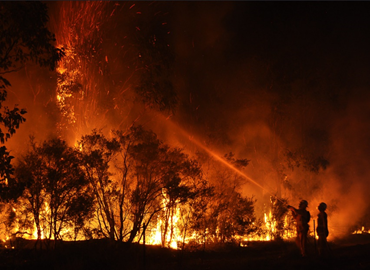How 13 news publishers are using WhatsApp channels.
Source: Nieman Lab
-We spoke to Financial Times, La Nacion, The New York Times, Vox, Chilango, Times of India and others about their first experiments sharing news on the world's favorite messaging app.
By HANAA' TAMEEZ
More than two billion people around the world use WhatsApp to send messages, provide customer service, organize communities, and share news headlines. Now, increasingly, they can get those headlines directly from the source.
In late September, the Financial Times launched its first WhatsApp channel, for news from global markets. WhatsApp, owned by Meta, describes Channels, launched in beta over the summer and launched globally in September, as "a one-way broadcast tool for administrators to send text, photos, videos, stickers and polls." The Financial Times Global Markets channel, which sends out one free story a day, grew quickly, and on Oct. 9, the Financial Times launched a second channel, dedicated to news of the Israel-Hamas conflict.
"It took us a year to get an audience of 35,000 on Telegram, first around the pandemic and then the war in Ukraine," said Rachel Banning-Lover, the FT's director of development and social media. "By comparison, [we grew] a similar-sized number of followers across all markets on WhatsApp in two weeks."
The Financial Times is one of a growing number of news publishers testing WhatsApp channels. "We know that the way people share news is changing. They don't share stories on Facebook or Twitter as much as they used to; they text their friends and group chats," said Nisha Chittal, editor-in-chief of Vox.com. "We wanted to find a way to tap into that audience behavior."
We spoke with 13 publishers around the world about how they use the channels. They stressed that it's too early to define an official channel strategy, especially since WhatsApp doesn't offer many metrics. "We can only see the approximate number of people who saw a post, as well as how many of each type of emoji reaction they used," noted Andres Krom, editor-in-chief of social media at Argentina's La Nacion.
Still, they shared some of what they are seeing early on. The responses have been edited.
Rachel Banning-Lover, head of development and social media at the Financial Times: There is a lot of misinformation about the Israel-Hamas conflict, so I thought a WhatsApp channel dedicated to conflict news would be a new way for the Financial Times to share reliable information with a global audience. The focus is on reaching new audiences and providing a public service, so the links shared in the group are free to read. At this point, to our knowledge, there are no other WhatsApp channels dedicated to covering the Israel-Hamas conflict in English, so we really felt there was an important gap that the Financial Times could fill.
Our strategy is based on learnings from two places: first, a previous Telegram channel we ran on the war in Ukraine, which we felt was most effective in the early days of the war, and second, a WhatsApp channel we launched for Markets grew very quickly. in a short space of time, so we thought WhatsApp was the right place now to reach new audiences.
The FT's social media team manages the channel. We pick a handful of the top FT.com news stories each day and analyze our choices on the global news desk before posting them. Each post should give followers a brief overview of what's happening. We try to select a mix of stories that cover the most important developments, highlight original reporting, and are already well read on FT.com, so if you only read that update and no other news, you are still well informed.
I'm trying to strike a balance between shortening our updates and providing enough context about each story on our Israel-Hamas news channel. What we've seen so far is that people are more likely to click on the first story of any update. In our markets channel, we have been sending shorter messages, promoting just one story. The topic seems to be the biggest indicator of whether a story will be successful in either channel.
Stories clearly marked as exclusive tend to generate more reactions in the markets channel, and in both channels, we have seen an increase in interaction with posts sent on Fridays. However, it's important to keep in mind that we don't normally post over the weekend, so Friday posts have a longer duration when new users discover the channel.
WhatsApp does not provide any data on the people who have subscribed to our channel so we cannot see where they are from, their gender or age group, making it difficult to compare them with audiences from other channels. However, we can see that the majority of people returning to FT.com are not subscribers, an experience shared across all our channels.
If we look only at direct messaging apps, it seems easier to get followers on WhatsApp than on Telegram. It took us a year to get an audience of 35,000 people on Telegram, first around the pandemic and then the war in Ukraine. Comparatively, we got a similar number of followers across all markets on WhatsApp in two weeks. I'd be very curious to know exactly who we were reaching on WhatsApp; one of the interesting things we learned from experimenting with Telegram was that we were reaching people in countries we didn't reach on other platforms.
It's still not easy to set up a channel on WhatsApp - you have to contact Meta to get access, and it can take several days for them to verify your channel so that it's searchable.
It's also worth thinking about how many updates to send per day. When people first sign up for a channel, automatic notifications are muted, so you want to motivate them to turn them on. I've seen some channels send more than 10 updates a day on very disconnected topics. Would you really want to get that many push notifications a day from a news organization?
Argentina's La Nacion, Andres Krom, social media editor-in-chief: WhatsApp is an integral part of the way Argentines communicate. More than nine out of 10 people with Internet access in our country use it and we found it a very fun opportunity to establish a different kind of connection with our audience.
WhatsApp is a very informal space where you chat in confidence with your best friend, mom or partner. That's why we set out to talk to our followers in a simple and friendly language, without depriving them of the quality content they are used to. In my opinion, this platform represents a great opportunity to communicate in a more personal and intimate way with your followers and experiment with alternative (shorter!) methods of storytelling.
2023 looks to be a pivotal year for Argentines, not only because we have seen some of the highest inflation rates in the world, but also because we are in the midst of a particularly contentious presidential election. Helping our audience navigate this sea of uncertainty is part of our mission, and to do so we must make use of all the technological means at our disposal.
In terms of metrics, WhatsApp channels are still somewhat rudimentary. We can only see the approximate number of people who saw a publication, as well as the amount of each type of emoji reaction they used. The posts with the most views or number of emojis usually revolve around the dispute between presidential candidates Javier Milei, Patricia Bullrich, and Sergio Massa. I feel it's too early to draw conclusions, but our WhatsApp audience certainly seems to show more interest in political content than entertainment, crime or [lifestyle] stories.
Since Meta turned off Instant Articles in [April], the traffic generated by our social media posts dropped dramatically. Instead of seeing it as a tragedy, we saw it as an opportunity. The challenge was to think about how we would transform ourselves in this new post-traffic world. That's why we decided to keep the number of links on our WhatsApp channel to a minimum.
We tend to prioritize shorter texts, maybe one or two paragraphs, to convey the main points of a news story. The idea is that, in most cases, our followers can find out what happened without having to leave the platform. We do not avoid links but reserve them for more detailed news articles or columns.






